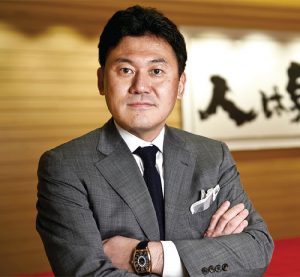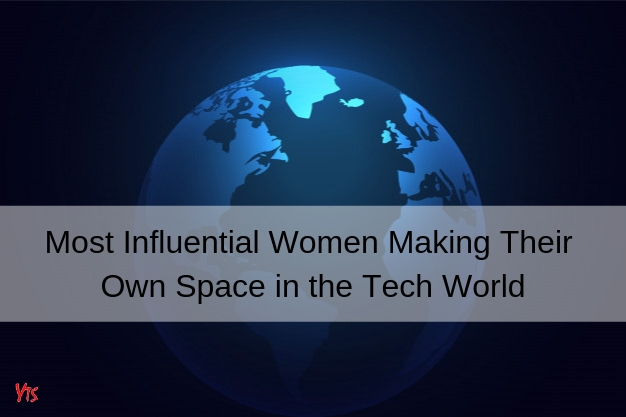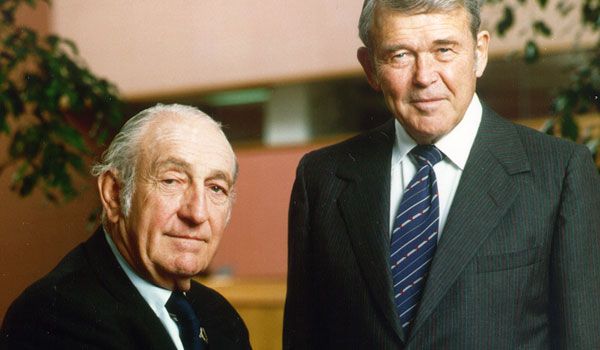Hiroshi Mikitani : Founder of Japan’s Largest eCommerce Marketplace, ‘Rakuten’
A degree from a famous business school, and a 9 to 5 corporate job, the dream of every parent for their child. And, there is no denying the fact that most of the youngsters want this settled life for themselves, too. But not every child is interested in the comfortable 9 to 5 race as some are who wants to make their own identity, and do not want to work for others but themselves. A similar situation goes to the success story of Hiroshi Mikitani, who got perfect education and even a perfect job, but his dream of entrepreneurship encouraged him to take the leap and fulfil his dreams.
Early Life
Mikitani was born on 11 March 1965, to Ryoichi Mikitani and Setsuko Miktani, in Kobe, Hy?go Prefecture, Japan. His father was an economist and was Japan’s first Fulbright Scholar to the US, and his mother worked for a trading company. His father even taught at Yale University, so the family moved to New Haven, Connecticut, from 1972 to 1974. He has two siblings, a brother who is a professor of biology at the University of Tokyo and a sister, who is a is a physician. Mikitani’s grandfather was also an entrepreneur and founded Minolta. In 1928.

Mikitani graduated with a commerce degree from Hitotsubashi University in 1988. He, later, completed his master’s degree in business administration from the famous Harvard Business School in Cambridge, Massachusetts, in 1993.
Career
As soon he graduated from Hitotsubashi University, Mikitani was recruited by the Industrial Bank of Japan, in 1988. In 1993, he was transferred to the US, where he took two years of break from his bank job to pursue a master’s degree from the Harvard Business School. Along with his education, he started a consulting service, his first official business.
In 1995, his birthplace, Kobe suffered from great loss due to the 20 seconds destructive earthquake. The incident was very heart-wrenching and led Mikitani to move back to his country to help revitalize Japan’s economy, and leave his job.
Founding Rakuten
After coming back to Japan, Mikitani did not want to start over with a corporate job. Instead, he started looking at the different business model to start his own new business. At the time, the internet was revolutionising the various industries and had initiated the inception of e-commerce businesses. Netscape was working as an e-commerce website, and Amazon was just starting up its own.
The step was risky, but Mikitani was inspired to set up his own e-commerce website. So he founded a company named MDM, Inc. with three co-founders on 7 February 1997 and launched Rakuten, an online marketplace. The website helped many small shop owners to reach new customers and with the growth of their business, charging a small monthly fee from them. The platform also helped the farmers sell their goods online. All the four co-founders invested a total of US$250,000 from their own money. In 1999, the company was renamed to Rakuten Inc. Just in three years of its inception, Rakuten went public on JASDAQ in 2000. The website became popular in no time and had grown to 2,300 stores and 95 million page views per month.
The next year, the company launched Rakuten Travels, an online hotel reservation platform. In 2004, Rakuten started its financial services and launched a Rakuten credit card in 2005. It soon became the largest tech giant operating Japan’s largest Internet bank and third-largest credit company.
As Mikitani’s prime reason to go back to Japan was to help in its economy and infrastructure, in December 2005, Rakuten established the Rakuten Institute of Technology in Tokyo. In 2008, the company began to expand outside Japan, and in 2011, the company invested in Pinterest. By 2012, the company had established its online services in Austria, Canada, Spain, Taiwan, Thailand, France, China, Hong Kong, Korea, etc.
In March 2015, the company started trading in Bitcoin. The company also made some acquisitions, earning more profits in the overseas business including Buy.com, PriceMinister, e-book service Kobo, Ebates, and also the messaging app Viber. By 2017, Rakuten had over 14,000 employees, over 42,000 shops on its e-commerce sites, and sales of nearly US$6 billion, with over 100 million members in Japan.
Peesonal Life
Mikitani married Haruko in 1993 and have two children with the marriage. In 2012, Mikitani received the Alumni Achievement Award from Harvard Business School. He was awarded the rank of Chevalier of the National Order of the Legion of Honour by the French government in 2014. He was also awarded the Spain-Japan Business Contribution Award by the Spanish Chamber of Commerce in 2017.

Yashica is a Software Engineer turned Content Writer, who loves to write on social causes and expertise in writing technical stuff. She loves to watch movies and explore new places. She believes that you need to live once before you die. So experimenting with her life and career choices, she is trying to live her life to the fullest.











